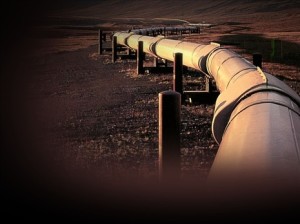Keystone XL Pipeline Update
The U.S. Department of State recently released its?Final Supplemental Environmental Impact Statement on the Keystone XL pipeline permit. Unfortunately, the  statement is deeply disappointing, concluding that the Keystone XL pipeline would not substantially worsen carbon pollution. The facts are clear – the Keystone pipeline will pump millions of tons of greenhouse gases into the atmosphere, and its construction will release hazardous air pollutants. The State Department?s calculations suggest that the pipeline will be better for the climate and the environment than the alternative of “taking no action,” since?carbon-heavy oil would still be extracted from Alberta at the same rate and transported by rail instead. This view fails to address the real alternative ? investing in renewable energy and energy efficiency.
statement is deeply disappointing, concluding that the Keystone XL pipeline would not substantially worsen carbon pollution. The facts are clear – the Keystone pipeline will pump millions of tons of greenhouse gases into the atmosphere, and its construction will release hazardous air pollutants. The State Department?s calculations suggest that the pipeline will be better for the climate and the environment than the alternative of “taking no action,” since?carbon-heavy oil would still be extracted from Alberta at the same rate and transported by rail instead. This view fails to address the real alternative ? investing in renewable energy and energy efficiency.
Babies?Near Fracking Sites More Likely to Have Birth Defects
According to a new study, women who live near?fracking sites are more likely to have babies with neural tube and congenital heart defects. As natural gas extraction soars in the United States, the findings adds to the?growing concern about the potential health effects from living  near fracking sites. Researchers from the Colorado School of Public Health analyzed birth defects among nearly 125,000 births in Colorado towns with fewer than 50,000 people between 1996 and 2009, examining how close the mothers lived to natural gas wells. Babies born to mothers living in areas with the highest density of wells – more than 125 wells per mile – were more than twice as likely to have neural tube defects than those living with no wells within a 10-mile radius. Children in those areas also had a 38 percent greater risk of congenital heart defects than those with no wells.? Both types of birth defects were fairly rare, occurring in a small percentage of births, but they can cause serious health effects. This study only adds to the vast evidence of the many dangers of fracking.
near fracking sites. Researchers from the Colorado School of Public Health analyzed birth defects among nearly 125,000 births in Colorado towns with fewer than 50,000 people between 1996 and 2009, examining how close the mothers lived to natural gas wells. Babies born to mothers living in areas with the highest density of wells – more than 125 wells per mile – were more than twice as likely to have neural tube defects than those living with no wells within a 10-mile radius. Children in those areas also had a 38 percent greater risk of congenital heart defects than those with no wells.? Both types of birth defects were fairly rare, occurring in a small percentage of births, but they can cause serious health effects. This study only adds to the vast evidence of the many dangers of fracking.
Dirty Dozen List of Endocrine Disruptors
Everyday, we are exposed to hormone-altering chemicals in a variety of ways – through the food we eat, the water we drink, and the products we use to clean.  Thankfully, the Environmental Working Group and the Keep A Breast Foundation have created a list of the endocrine disruptors we are most likely to come in contact with, and how we can reduce exposure to them. These toxic chemicals can have major effects on our health, but thankfully there are simple ways in which we can avoid them. Click?here to learn more about?12 of the worst hormone disruptors, how they do their dirty deeds, and some tips on how to avoid them.
Thankfully, the Environmental Working Group and the Keep A Breast Foundation have created a list of the endocrine disruptors we are most likely to come in contact with, and how we can reduce exposure to them. These toxic chemicals can have major effects on our health, but thankfully there are simple ways in which we can avoid them. Click?here to learn more about?12 of the worst hormone disruptors, how they do their dirty deeds, and some tips on how to avoid them.

Comments are closed.